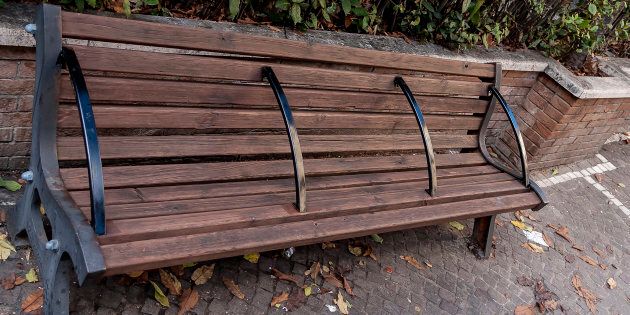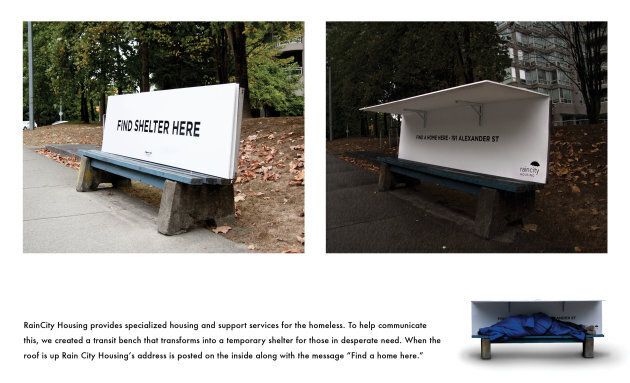
A Calgarian's tweet about a bench in his city has been shared thousands of times and has kickstarted an online discussion over the "hostile" design of some public spaces.
On Saturday, Isaac Azuelos tweeted a picture of a bench painted with the colours of the rainbow.
His caption: "When you're inclusive but still hate the poor."
Azuelos was commenting on the metal bars placed across the bench. Though they are nothing more than uncomfortable armrests to most people, critics of "hostile design" see them as deliberate tools to discourage homeless people from sleeping on benches.
Also referred to as "defensive" or "exclusionary" design, this type of public planning aims to prevent the misuse of spaces like benches, ledges or windowsills.
Examples of this type of design are ubiquitous. They range from the metal bars in Azuelos' photo to painful spikes placed near walls to artwork placed over vents.
A day after he sent out the photo, the group that owns the bench reached out to Azuelos to say it was in fact donated and intended to help a senior who often walked by the area.
"The intent was not to institute or uphold the principles of hostile or exclusionary design," read a message Azuelos received from containR.
While fellow critics shared similar examples from their communities with Azuelos, others argued that public spaces are not designed to accommodate people sleeping on them.
Some also said that the metal bars on the bench that Azuelos spotted are merely a support for anyone — like the elderly — who might need help getting on or off the seat.
Perhaps those supports are to help the elderly patron mentioned to stand up after sitting down ? Something to be considered at the least.
— Emmett Keane (@EmmettKeane) May 13, 2018
Several debates over hostile design have popped up online this year, with some leading to real-world changes.
"Given our responsibility to provide compassionate care, it has indeed been seen as hostile and not something a hospital should be doing, given the care we provide to everyone who comes through our doors," said Charlie Chan, the group's interim president and CEO, at the time.
In January, artist Stuart Semple spotted metal bars placed over benches in Bournemouth, England. To protest, he set up HostileDesign.org, a website dedicated to raising awareness and condemning examples of defensive design.
The site collects examples of "designs against humanity" that users have shared to social media using the hashtag #HostileDesign.
After public pressure and criticism generated from Semple's campaign, the city's council opted to remove the bars, according to BBC News.
In Canada, some instances of hostile design have also garnered outrage in previous years.
In 2014, then-Montreal mayor Denis Coderre ordered the removal of "anti-loitering" spikes that were placed outside a music store. Decorative objects that were placed in Moncton, N.B. to deter loitering also led to public outcry, according to CBC News.

That same year, images of transit benches in Vancouver went viral, for a completely different reason.
One of the benches carried the phrase "Find shelter here," while another had "This is a bedroom" written on it with UV-sensitive and glow-in-the-dark ink.
The benches were praised as a compassionate response to homelessness in Vancouver. They were designed by Spring Advertising and were part of a month-long campaign for RainCity Housing, a group that offers housing support and services to the city's homeless.
With a file from The Canadian Press